The Hibernian legacy of the Giants baseball team.
To appreciate the legacy of the San Francisco Giants we have to return to their New York beginnings and the ballplayers who made it all possible.
The story begins in 1880 when a prosperous tobacco merchant, John B. Day, began to look at baseball as a good investment.
With the support of his Tammany Hall associates, John B. and his brother-in-law, Joseph Gordon, formed the Metropolitan Exhibition Company “MEC,” and bought the Metropolitans, a local independent ball club.
John B. hired Jim Mutrie, an experienced field captain, to manage the team, which played on the polo fields, a tract of land owned by New York Herald publisher James Gordon Bennett, between West 110th-112th Streets across from Central Park.
The Metropolitans were invited to join the National League in 1882, having achieved much success under Mutrie’s stewardship. But as the team was making good money off home crowds and exhibition games with National League players, John B. did not take up the offer. However, never one to pass up a business opportunity, he decided to form a new team, the Gothams, later known as the Giants, and he set about recruiting players from the defunct Troy franchise, which had been eliminated from the National League to make room for new franchises in New York City and Philadelphia.
Both teams shared Bennett’s polo grounds. The site was awkwardly divided: separated by a canvas curtain into the eastern field, the Gothams’ site, and the western field, held by the Metropolitans.
The Metropolitans won the inaugural American Association pennant in 1884, but John B. decided to unload the team. He believed he could make more money out of his National League team.
He shifted manager Mutrie to the Gothams. He also poached pitcher Tim Keefe and infielder “Dude” Esterbrook from the Metropolitans. These machinations strengthened the Gothams, who were led by Tim Keefe and Mickey Welch on the mound, and Roger Connor, Buck Ewing, John Montgomery Ward, and Jim O’Rourke on offense. Mutrie was so impressed with the team that he spoke of his players as “My Giants.”
(The Gothams were called the “Giants” in 1885, but it wasn’t until 1886 that they had a full season known as the Giants.)
After the 1888 season, the original polo grounds and the Metropolitans were no more. The Giants opened the New Year at the St. George’s Cricket Ground on Staten Island. The pavilions there had a panoramic view of New York Harbor and were leased from the same person who ran the ferry system. But Mutrie and his Giants wanted to return to uptown Manhattan. The construction of a new ball field soon began near the terminus of the Ninth Avenue elevated train. This ball park, Polo Grounds II, was located below the lofty site known as Coogan’s Bluff, a large cliff extending northward from 155th Street, owned by James J. Coogan a real estate merchant who also happened to be the Manhattan Borough President.
During the Players’ League strike season of 1890, a competing ballpark was built adjacent to Polo Grounds II, at the northern part of Coogan’s Bluff, known as “the Hollow.” Only a narrow alley separated the two ball fields. When the Players’ League disbanded in 1891, the National League Giants took over their park and renamed it Polo Grounds III. (In 1893 John B. sold the Giants franchise to Cornelius C. Van Cott, though he returned briefly to manage the team in 1899.) On April 14, 1911, a fire destroyed most of the grandstand seating, which was replaced by concrete and steel, and the grounds re-opened on June 28, 1911. The team tried to change the name to Brush Stadium for their new owner, John T. Brush, but the name did not stick The Giants remained at this site, Polo Grounds IV, for forty-six years.
The Giants’ tenure in New York can be divided into three eras, each distinguished by the ethnicity of its players. The first two eras encompassed the 1883-1902 seasons. When John B. Day operated two franchises from 1883 to 1887, the dominant ethnic group was Irish-American players. Forty-eight percent of the Gotham roster and thirty-two percent of the Metropolitan players were of Irish descent. In the 1888-1902 period, forty-nine percent of the Giants were Irish. These seasons saw the Giants win league championships in 1888, 1889 and 1894. Those teams were composed of pitchers such as “Smiling Mickey” Welch, Tim Keefe, and the “Hoosier Fireball” Amos Rusie. Their offense was built around the slugging of Roger Connor, Buck Ewing, John Ward, James O’Rourke, and Mike Tiernan. (Ewing and Ward had Irish mothers.)
The next major era was under the legendary John McGraw. He came over from the American League Orioles of Baltimore and managed the Giants from 1902 to 1932. He won ten pennants and three World Series: 1905, 1921, and 1922. His most dominant eras were 1904-1905, 1911-1913, and 1921-1924. In his early years from 1903 to 1920, thirty-six percent of his players were of
Irish extraction, Roger Bresnahan, nicknamed “The Duke of Tralee,” Joe McGinnity, “Turkey” Mike Donlin, and “Laughing Larry” Doyle were his most dominant stars behind the great Christy Mathewson.
The Giants won the 1905 World Series over the Philadelphia Athletics, but the A’s, managed by Connie Mack, went on to defeat the Giants in the 1911 and 1913 Series with Irish players such as Eddie Collins (second base), Jack Barry (shortstop), John “Stuffy” McInnis on first base, and outfielder Danny Murphy.
In McGraw’s remaining managerial years, the roster of Irish players on his Giants was at nineteen percent. These years were dominated by players of different ethnicities — Bill Terry, Mel Ott, Freddie Lindstrom, Frankie Frisch, and Carl Hubbell. Nevertheless, George Kelly, Freddy Fitzsimmons, Lefty O’Doul, and Emil “Irish” Meusel made their contributions.
McGraw, who enjoyed great success as a player before becoming a manager, was a protégé of Ned Hanlon who managed the Orioles of Baltimore during their championship years in the 1890s.
Playing what was said to be Irish-style baseball, Hanlon and McGraw promoted smart take-charge and aggressive ball playing. They intimidated umpires and players with “disorganizing baseball.”
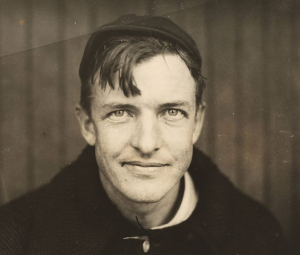
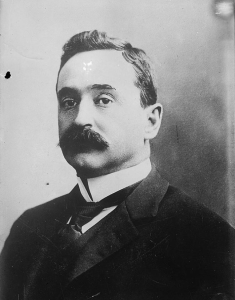
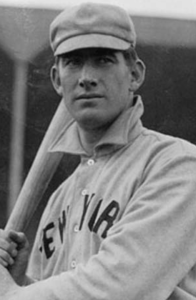
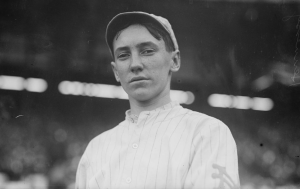
Photos clockwise: Roger Bresnahan known as the “Duke of Tralee”, Ned Hanlon who managed the Baltimore Orioles in the 1890s, Christy Mathewson, and Giants’ ballboy and mascot Dick Hennessy in 1913.
Bill Joyce, the Giants’ manager in the late 1890s declared, “Give me a good Irish infield and I will show you a good team. I don’t mean it is necessary to have them all Irish, but you want two quick-thinking Celts to keep the Germans and [other players] moving.” For a good many of
McGraw’s years, he followed what Hanlon’s Irish Orioles – Hugh Jennings, Willie Keeler, Joe Kelley. Jack Doyle and Jimmy Donnelly – put into practice.
After McGraw’s departure, he handed over the team to Bill Terry in 1932 The Giants won the World Series in 1933 and won four more National League championships – 1936, 1937, 1951, and 1954. It wasn’t until their last effort in 1954 that the New York Giants won their final World Series. They finished playing in New York in 1957. During this post-McGraw era, the East Coast Giants were led by German and later by African-American and Hispanic players. Mel Ott, John Mize, and Carl Hubbell were replaced by Willie Mays, Monte Irvin, Hank Thompson, Willie Kirkland, and Bill White, and then by Orlando Cepeda, Felipe Alou, and Ruben Gomez.
The Giants finished playing in New York in 1957. The Polo Grounds was closed in December 1963 and demolished a few months later. It was replaced by the Polo Ground Towers, a public housing project.
Once the team relocated to the West Coast a new chapter in Giants’ history was written. Despite three National League titles, the San Francisco Giants had to wait until 2010 for their next World Championship. After a disappointing 2011 season, the team captured the 2012 series, and again in 2014. Whatever the future has in store for these new “Giants on the Bay,” it will be built on a long-winning ethnic tradition of its ballplayers.
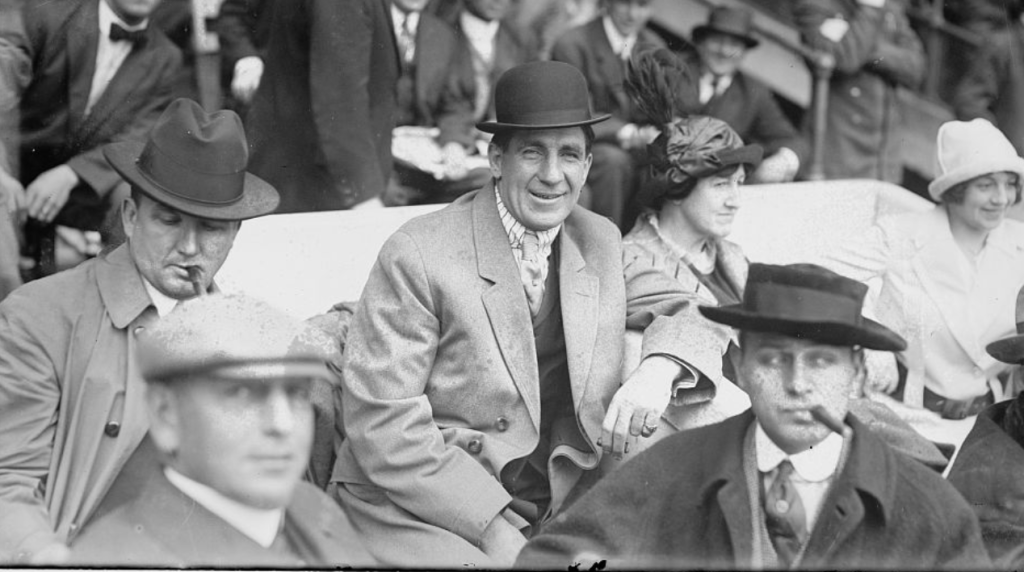
Boxer Jim Corbett (center) and Blossom Seeley (wife of Rube Marquard) at Game One of the 1913 World Series at the Polo Grounds New York.
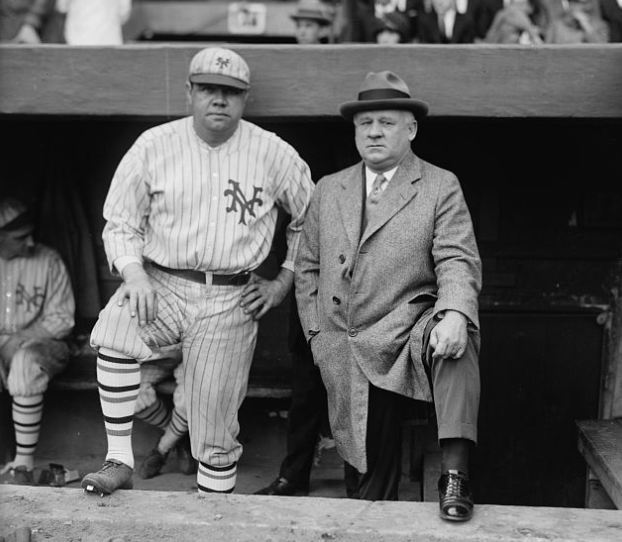
To read more about the Irish in baseball read:
The Daddy of Baseball by Pat O’Neill and Tom Coffman
The Irish in Early Baseball by David Fleitz
Smiling Mikey Welch by Ray Cavanaugh

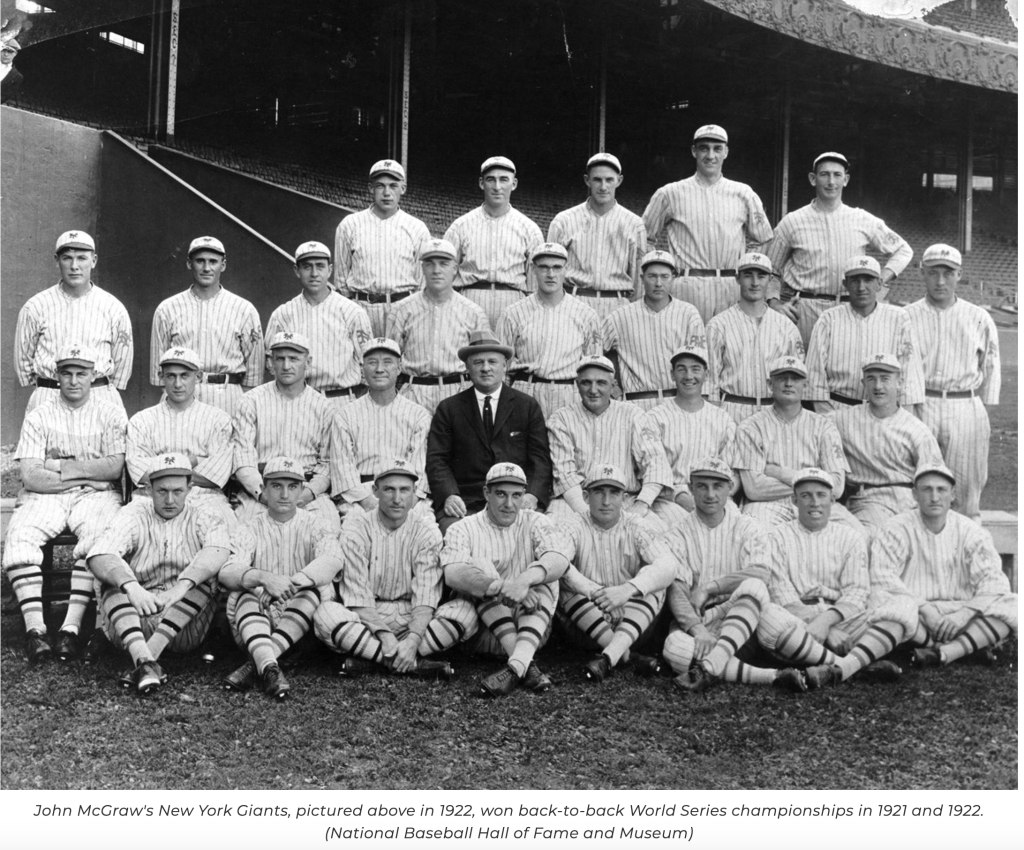
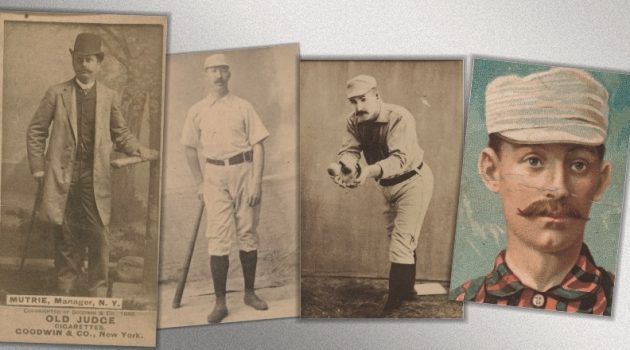
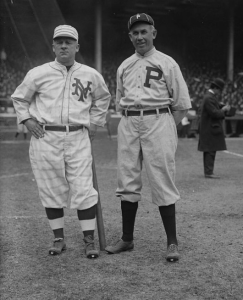
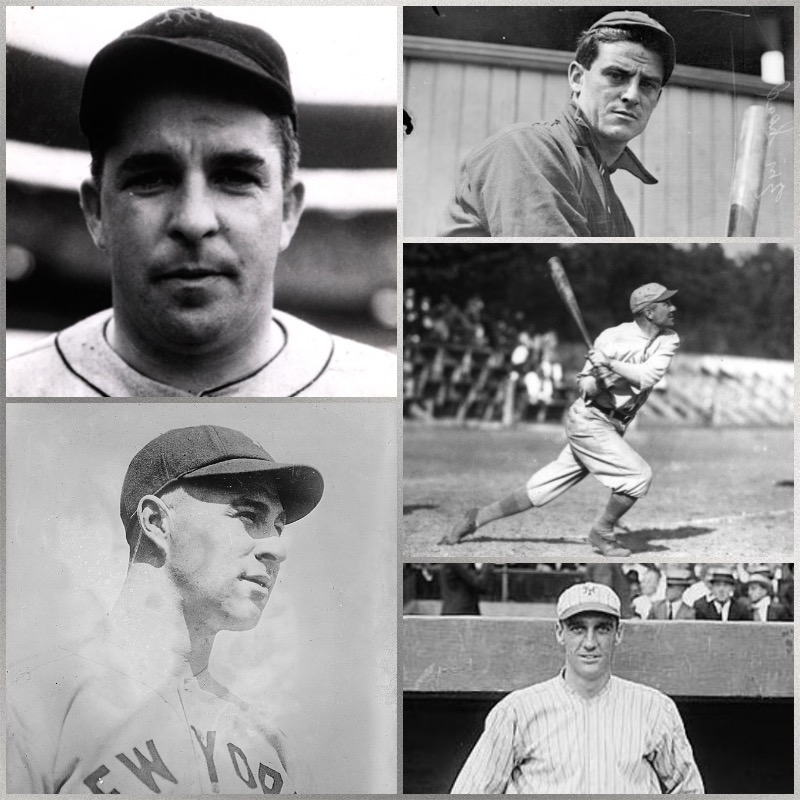
Leave a Reply